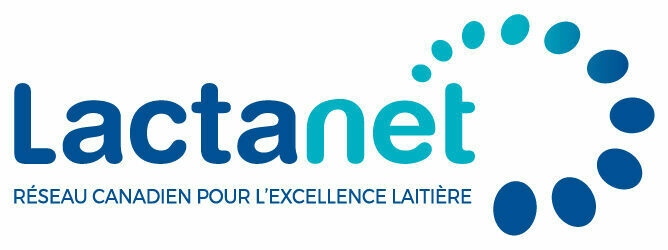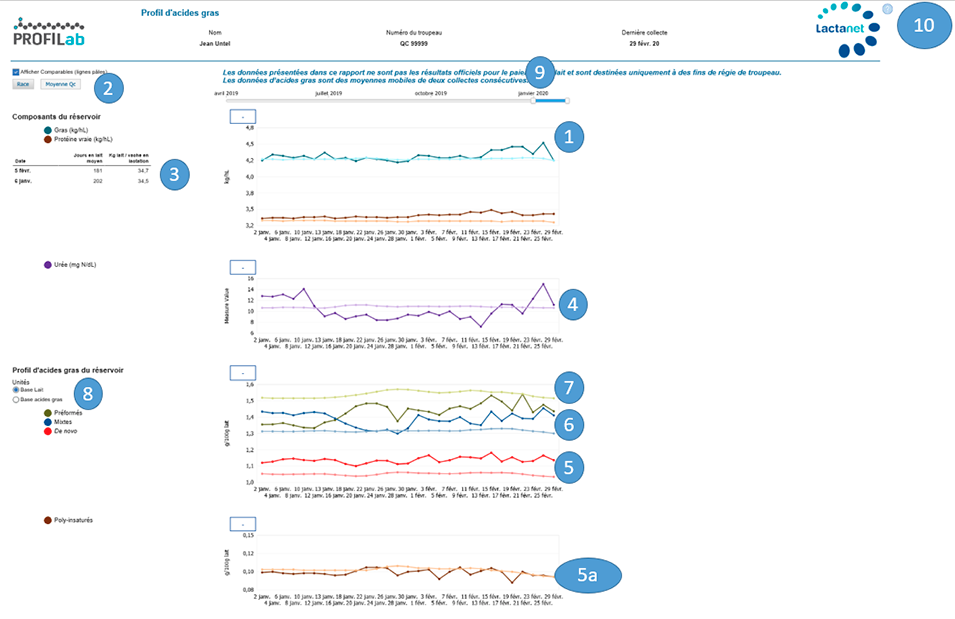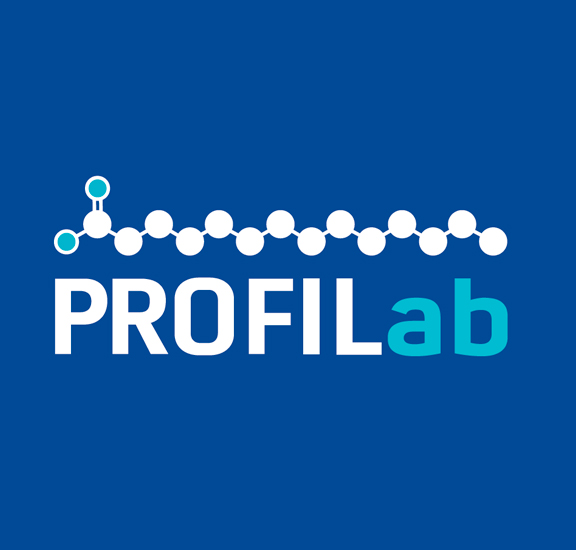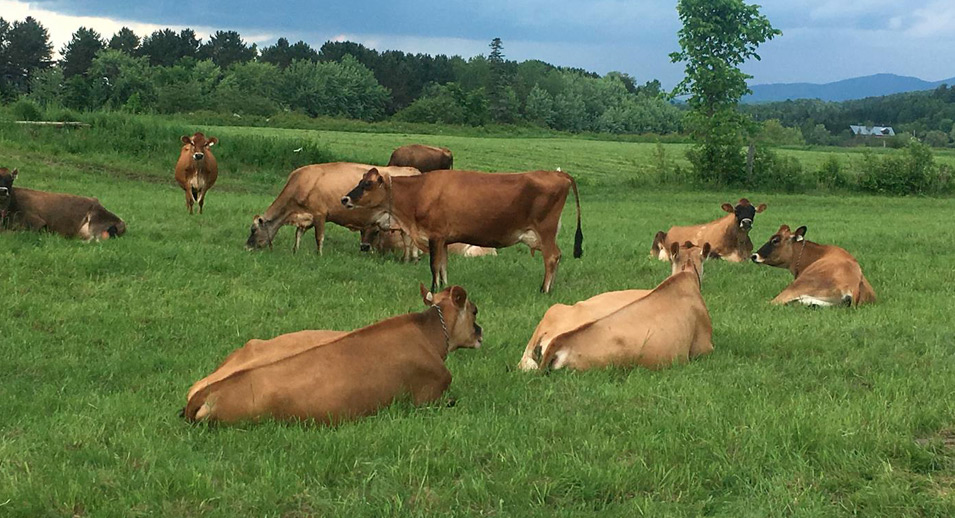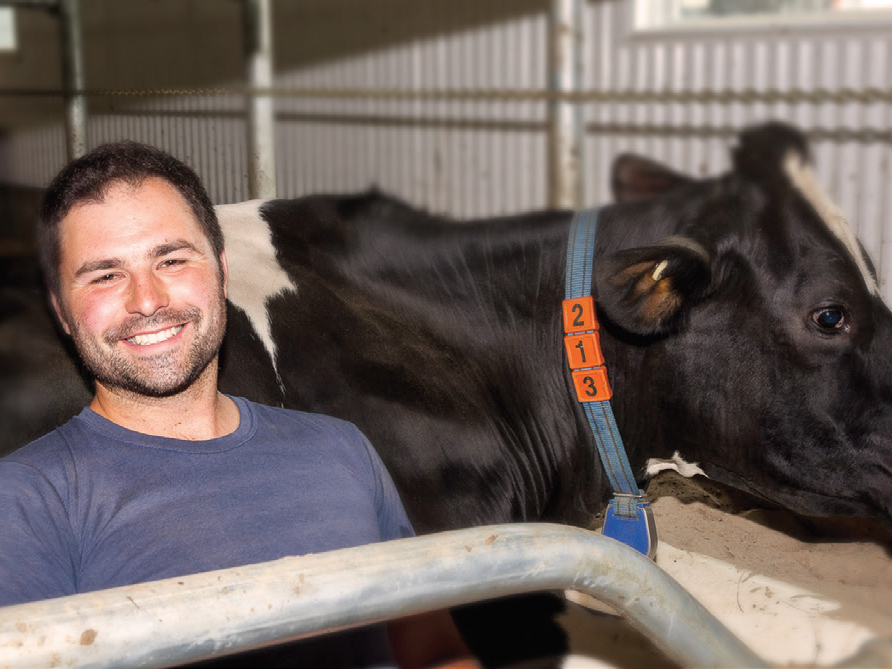10 Steps to Using PROFILab Effectively
- March 16, 2020
The PROFILab interactive report can provide a wealth of information at a glance so it is important to know how to find your way around and, even more so, how to interpret what you find.
PROFILab User’s Guide
Here are 10 steps to follow in order to get the most out of this report for your herd.
1. First, take a look at your components
Fat and Protein are familiar values. This graph provides a quick look at your situation as compared to the current averages in Quebec.
2. Choose your breed
If your herd is mostly made up of Jerseys, click “Breed” and choose “Jersey”. The fatty acid profile and components for this breed will be very different from that of the Holstein cow. For other breeds, or mixed herds, choose Holstein or “QC Average” to make your comparisons.
3. Herd information
Herds on milk recording will find information about average days in milk and milk production levels at milk recording for the selected period. This information can be useful for validating recent calvings or evaluating the impact that recent changes have had on production levels.
4. Bulk tank urea, well-known value
The urea value provides an initial estimate of what is happening in the rumen.
This value has been around for some time now so we are more familiar with it. Is there a connection to fatty acids? Yes. We will come back to that later…
5. The de novo fatty acids are the group we want to maximize
When looking at your fatty acid profile, always begin with the de novo fatty acids. Why? Because they reflect rumen health, because herds that have good components have higher de novo fatty acids and because herds with high milk production have de novo levels which are at or above average. We want the de novo group to be at least equal to the breed average.
6. The mixed fatty acid group confirms rumen health
- High De novo AND mixed: confirms that the rumen is working well and healthy
- Low De novo, but high mixed: there are fatty acids coming from the diet. E.g., the addition of palm oil based feeds will generate this type of result.
- De novo AND mixed are both low: The same conclusions as when the de novo value is low. See number 5 above.
7. The preformed fatty acids reveal the amount of fatty acids ingested or that there are cows that are losing weight
There is generally less correlation between the preformed fatty acids and milk protein and fat levels. It is therefore possible for components to be very good even if the preformed value is below average. This is why we look at this fatty acid third, after the others. The preformed group can, however, reveal information about changes in forage, quantities of dry matter ingested, and periods of stress.
If the preformed and the de novo groups decrease at the same time, this is usually not a good sign! Be sure to find the cause and correct the situation as quickly as possible, to avoid a drop in milk components.
8. On a milk basis or fatty acid basis?
For the majority of herds, always on a milk basis! This is true even for herds that produce a lot of milk.
It will give you the best evaluation of your cows’ metabolism and intake. On a milk basis, the sum of the three fatty acids equals the fat value. On a fatty acid basis, the sum of the three fatty acids equals 100%. When we are calculating on a fatty acid basis, if one goes up, another must go down.
So why do we provide the fatty acid basis? In some very atypical herds where little known feeds are being used, the fatty acid basis may help to compare with the average.
9. Validate your herd’s historical trends
With PROFILab you can presently look back into the past as far as April 2019, and eventually to a maximum of 24 months. This historical data can help you to compare your performance and the seasonal average, or evaluate the impact of changes made to housing, or feed management.
10. Need help? Check out Possible Solutions and our other recent publications or contact us for more information.
The help menu will take you to the PROFILab page where you will find all of the current information about the interpretation and comprehension of this tool. There you will find a guide to possible solutions that is available for download.
Be sure to check out this page often and contact Lactanet for more information
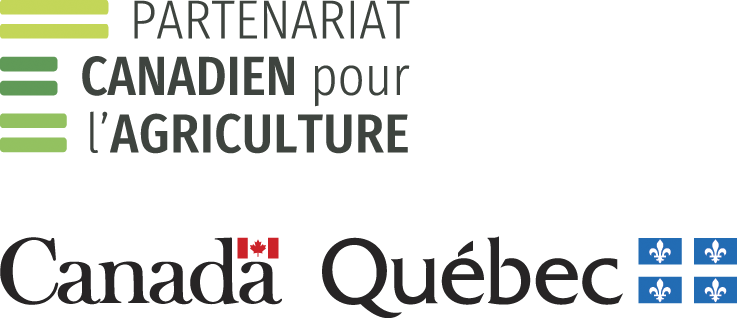
This project is funded through the Innov’Action agri-food program under the Canadian Agricultural Partnership, as part of an agreement between the governments of Canada and Quebec.

